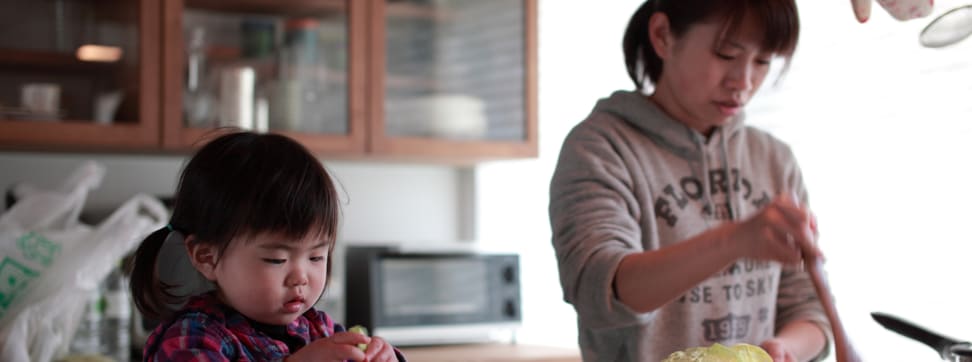 Credit:
Credit:
Products are chosen independently by our editors. Purchases made through our links may earn us a commission.
Look, we get it. You obviously think the world of your mother—a saintly woman who cared for you, raised you, and no doubt taught you everything you know about cooking.
Unfortunately, it falls to us to tell you that when it comes to commonly held cooking techniques, your mother was dead wrong.
So, in honor of the impending arrival of Mother's Day, we present the five classic lies everyone's mother told them about cooking. (Not my mother though. My mother is a saint.)
Alcohol loses its potency during cooking.
Cooking with alcohol is an excellent way to enhance the flavor of your food. The common belief is that the heat involved in cooking causes the actual alcohol to evaporate, leaving behind only the delicious flavor. In essence, you're left with all the rich taste, but none of the vice.

As it turns out, this is not the case. A study by the University of Idaho and the U.S. Department of Agriculture's Nutrient Data Laboratory has revealed that up to 85% of original alcohol content can linger after cooking. So you may want to reconsider those beer-battered onion rings if you're back on the wagon.
It's worth mentioning that it is possible to completely remove all traces of alcohol. You just have to be sure to cook your food for at least three hours.
Adding salt to water raises the boiling point.
Technically, this one is true. Adding salt to water does raise the boiling point, ever so slightly. The theory behind this common practice is that pasta cooked at higher temperatures will taste better.

In reality though, you would need to add about 230 grams of salt (roughly half a pound) to one liter of water in order to raise the boiling point by just 35°F. Far be it from us to question personal preference, but that sounds like way too much salt for any pasta dish.
Searing meat locks in the juices.
This little nugget of erroneous wisdom is ascribed to a misreading of 19th-century German chemist Justus von Leibig's studies on food preparation. His theory posits that boiling meat (as opposed to simmering it) creates a barrier around the food surface, and thereby seals in the juices. His now-disproven theory was somehow incorrectly applied to dry heating methods, such as searing.

The fact is that searing meat is actually likely to result in a loss of juices, as demonstrated by the Food Network's Alton Brown.
The real reason we assume that searing meat helps retain moisture is likely a result of simple psychology, not food chemistry. Searing meat triggers the Maillard Reaction, which creates the delightfully browned crust on dry-heated food. The crispy exterior creates a strong contrast with the juicy interior, giving the impression that your steak is moister than it really is.
You should only eat well-done pork.
In your mother's defense, this was a very real rule until very recently.
In the past, the USDA recommended cooking pork to an internal temperature of 160°F in order to limit the risk of contracting trichinosis—a particularly nasty food-borne illness. However, thanks to stricter feed rules and better hygiene at meat-packing plants, the disease is now extremely rare in the developed world.
For this reason, the USDA now recommends that pork be cooked to an internal temperature of 145°F, which is low enough for a nice medium doneness.

But trust us on this one, you haven't had pork chops until you've had them medium rare. (Admittedly, that's a bit below even the new USDA recommendation. Most professional chefs recommend a temperature of about 135°F.)
Adding oil to pasta prevents sticking.
It sure does!
Of course, it also makes the pasta so slippery that all of your delicious sauce can't adhere to the pasta. Save your oil and simply stir the pasta to prevent it from clumping together while it's cooking. Once it's done and it's been drained in a colander, ladle in a little sauce to keep it from sticking before serving.

Hero image: Flickr user "yasuhirotao" (CC BY-NC 2.0)
